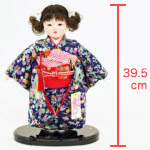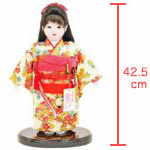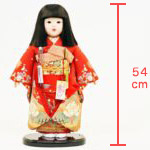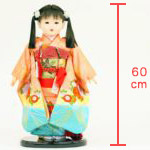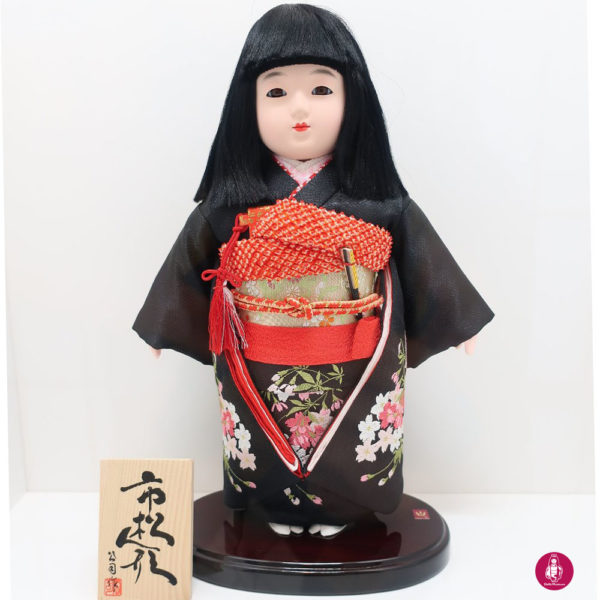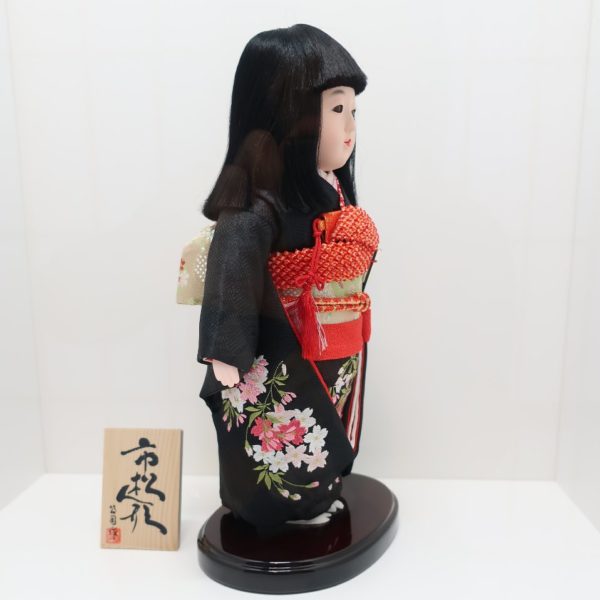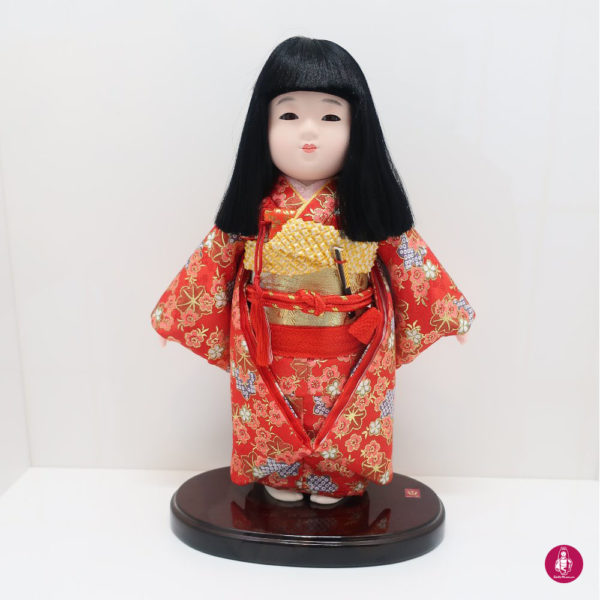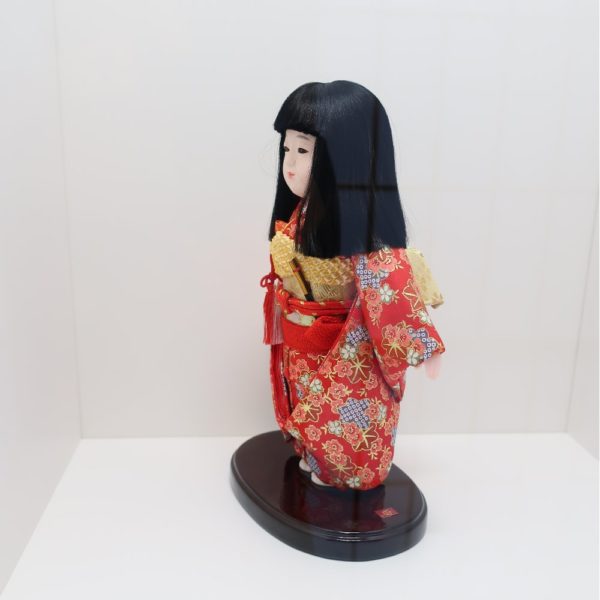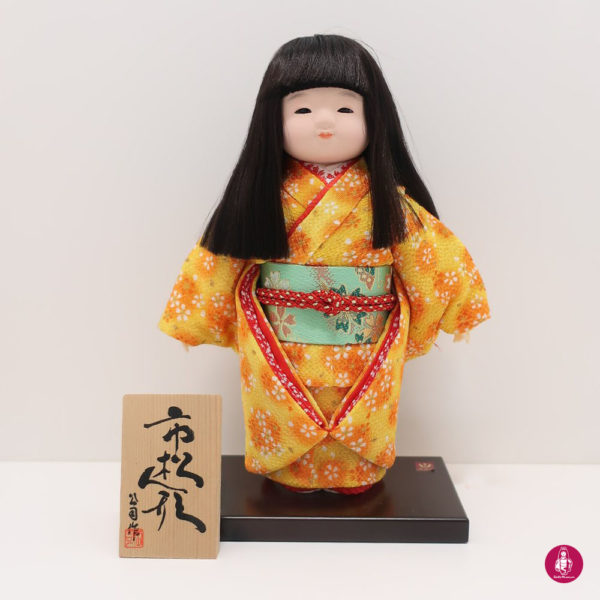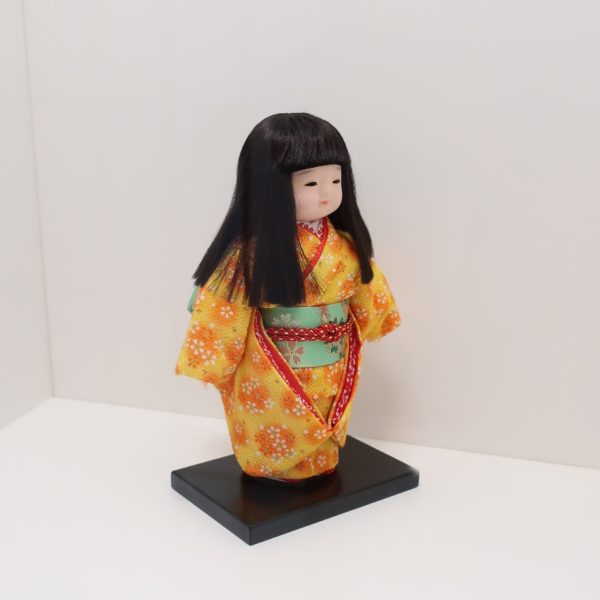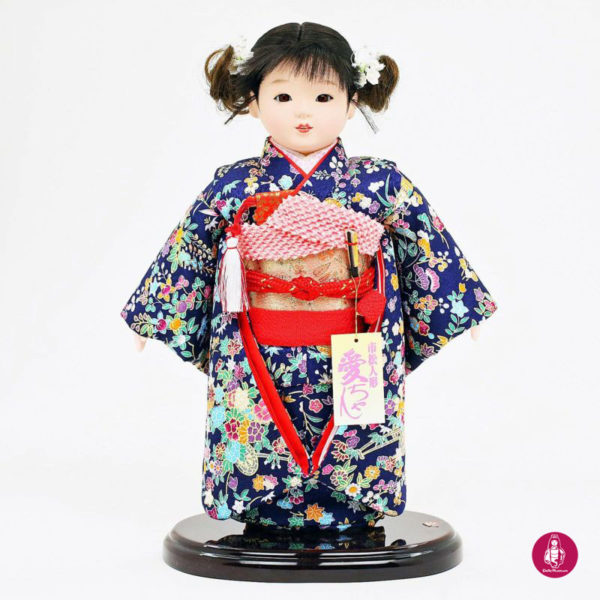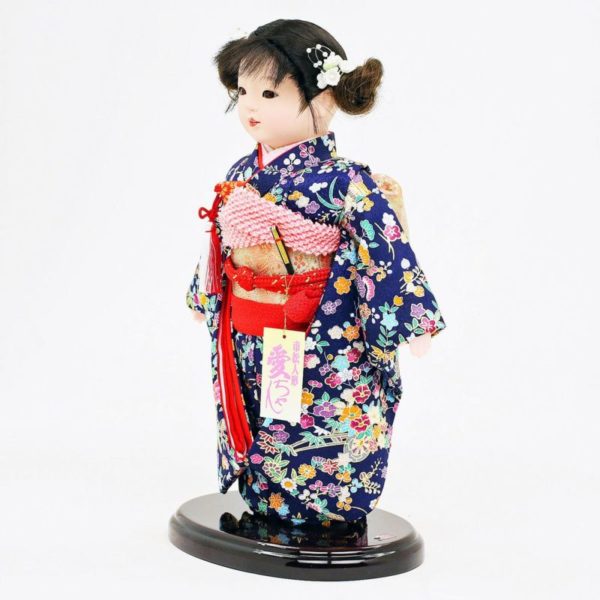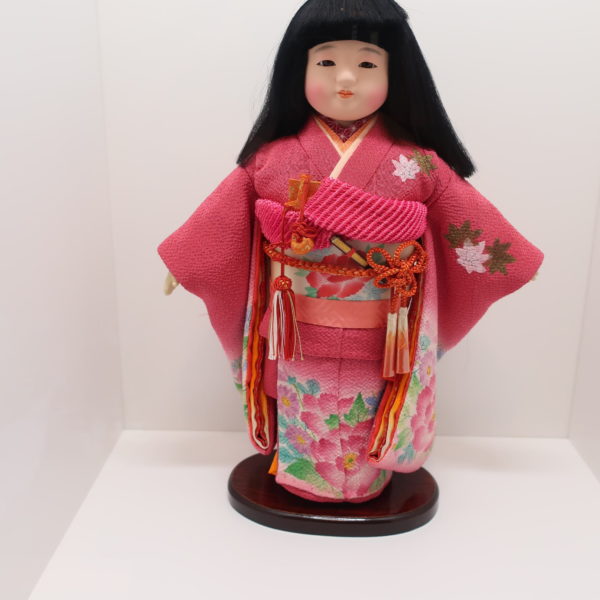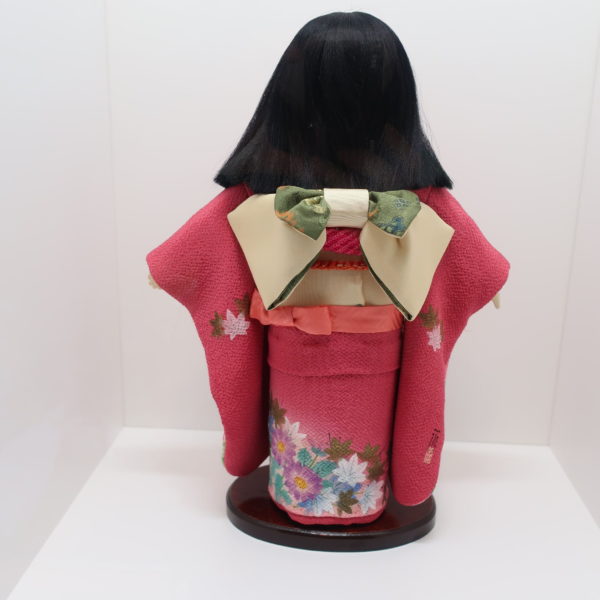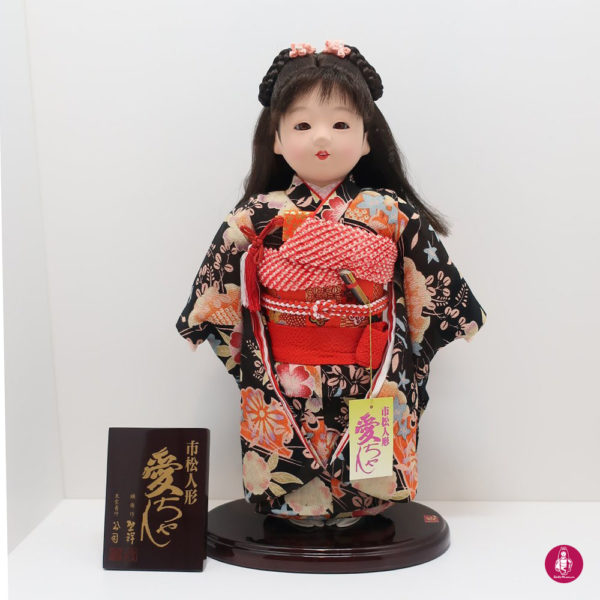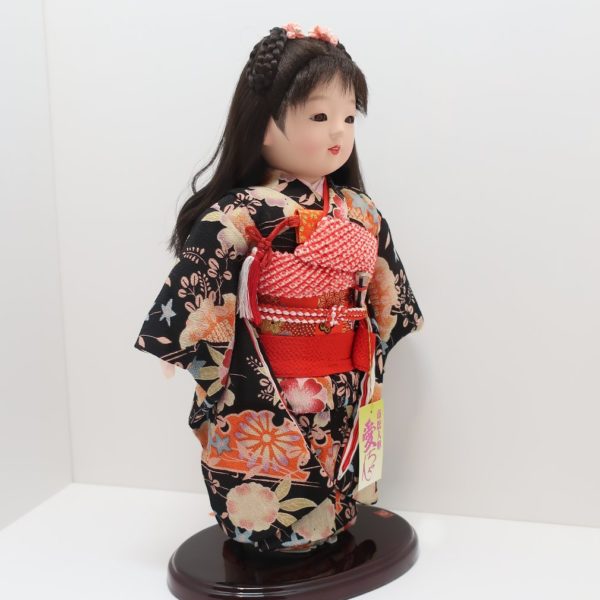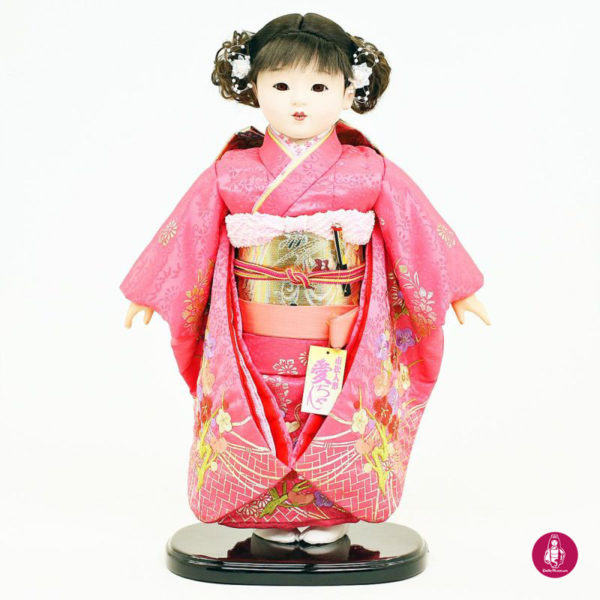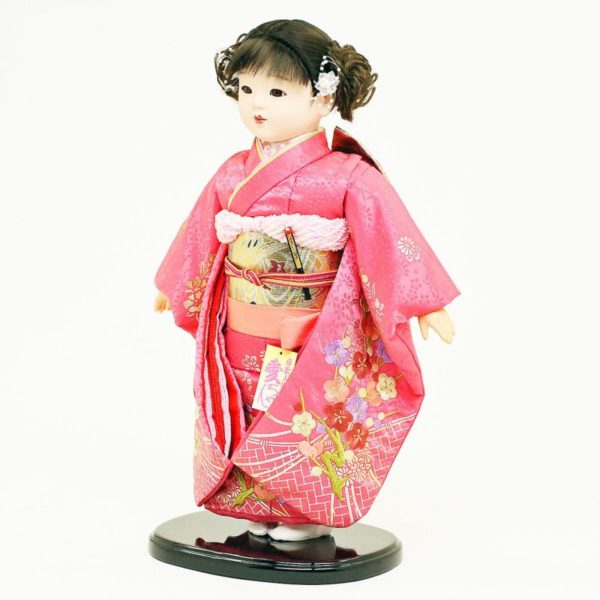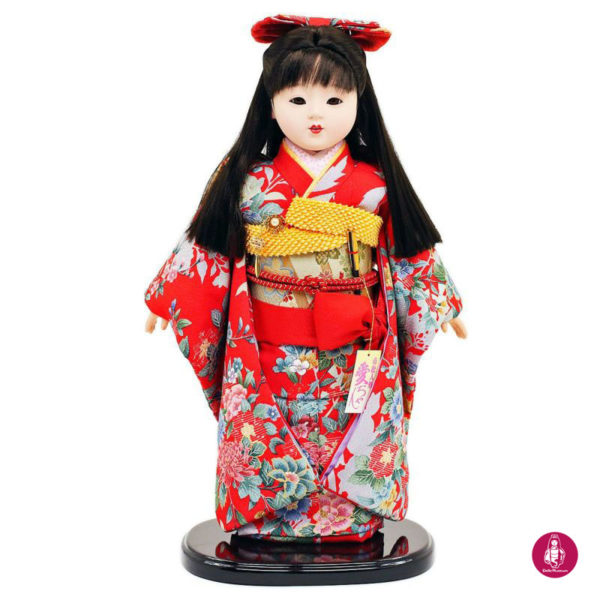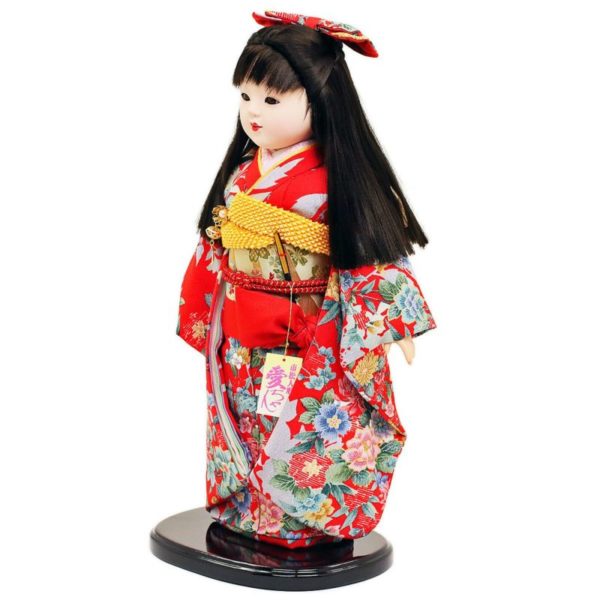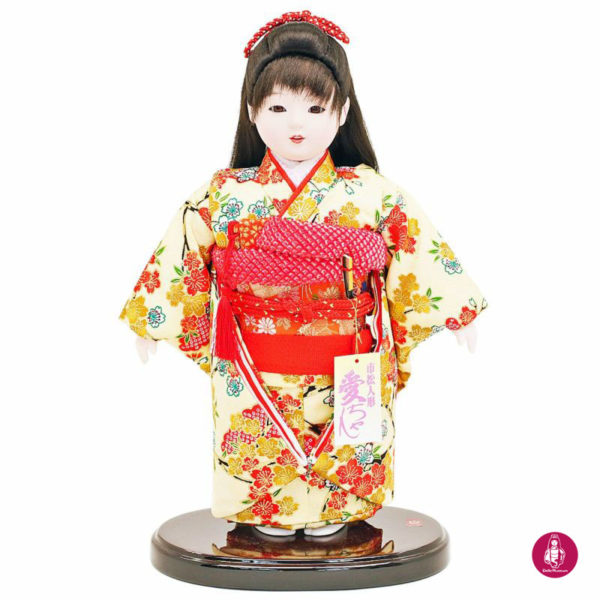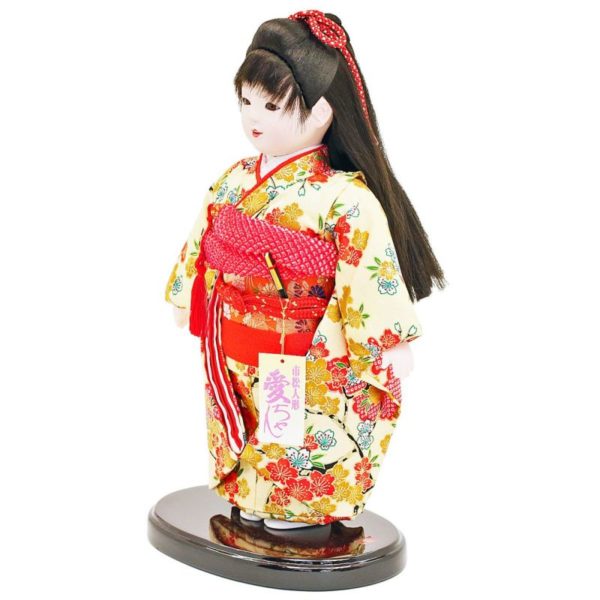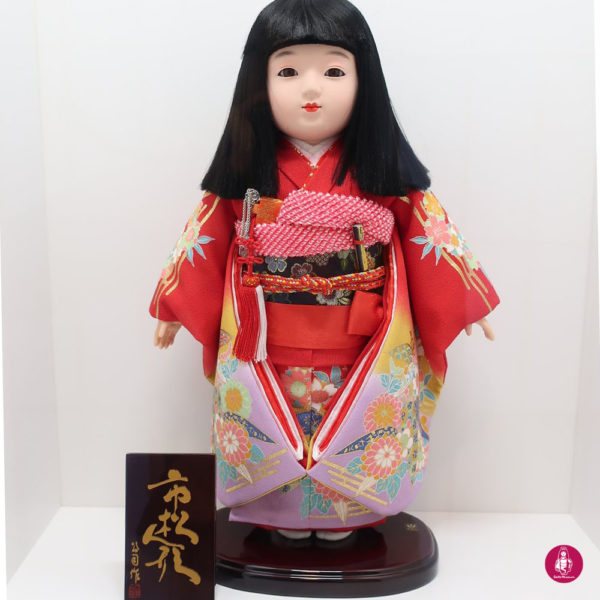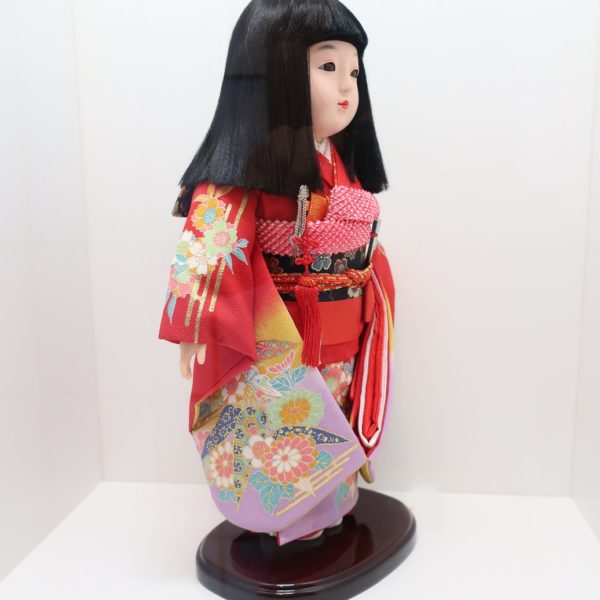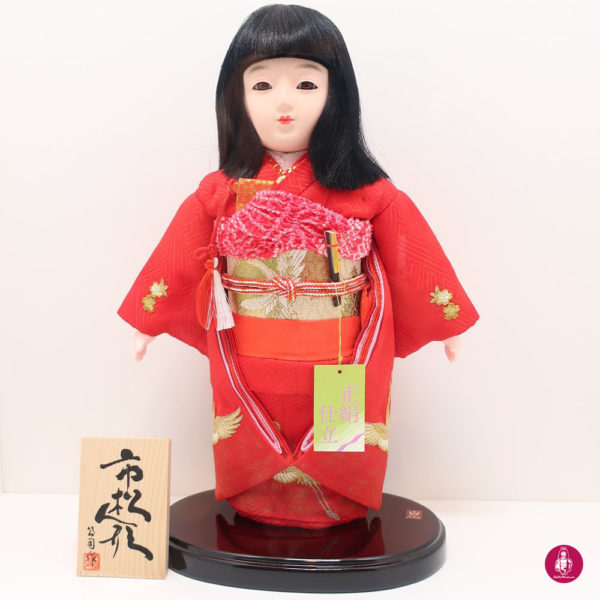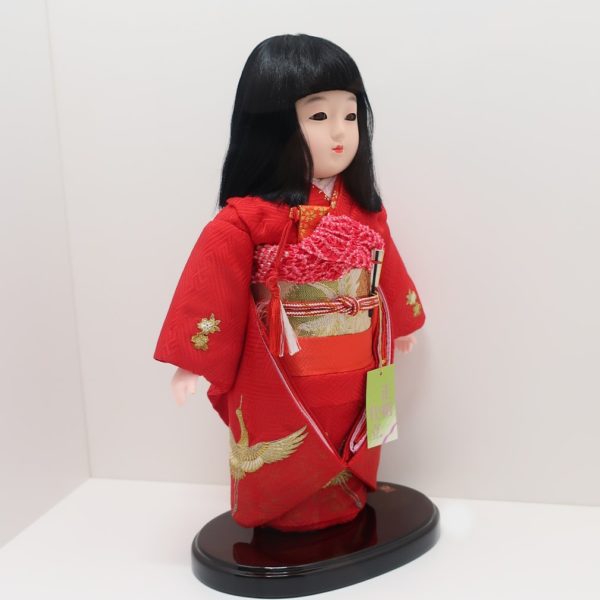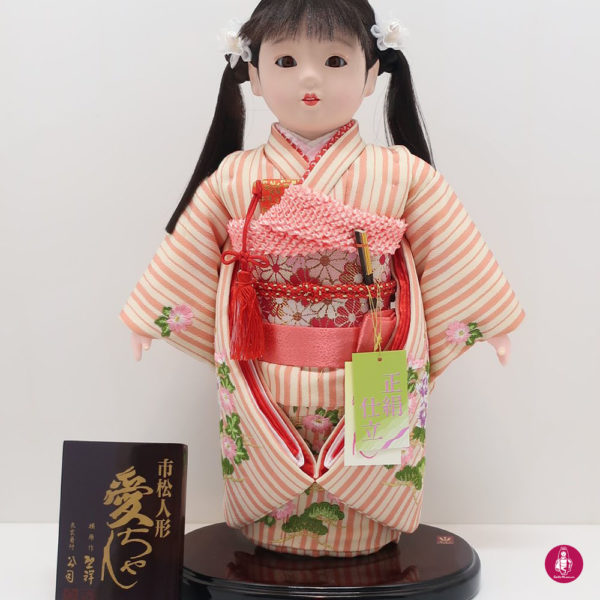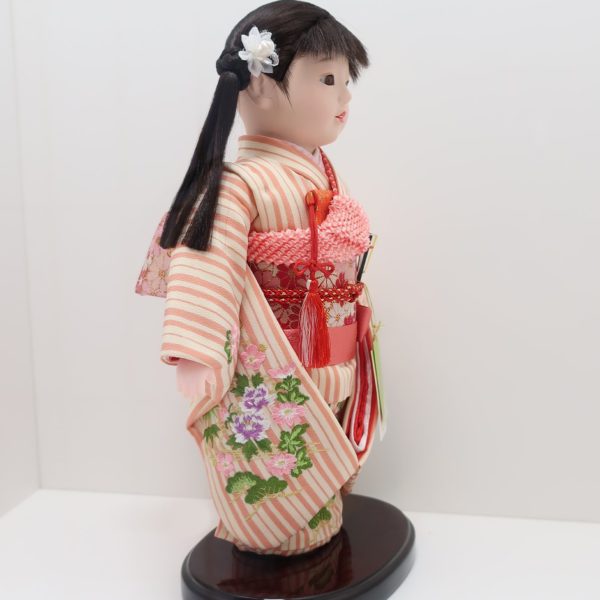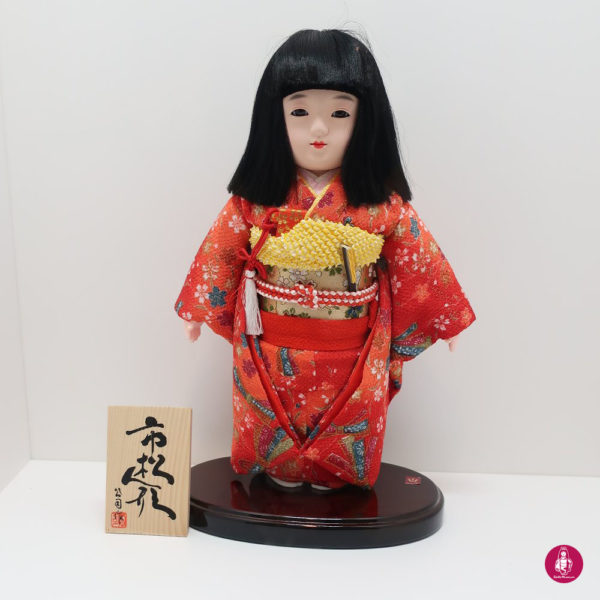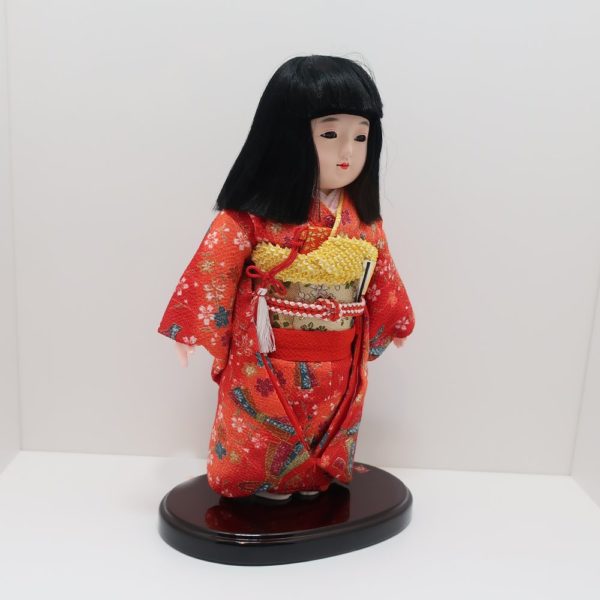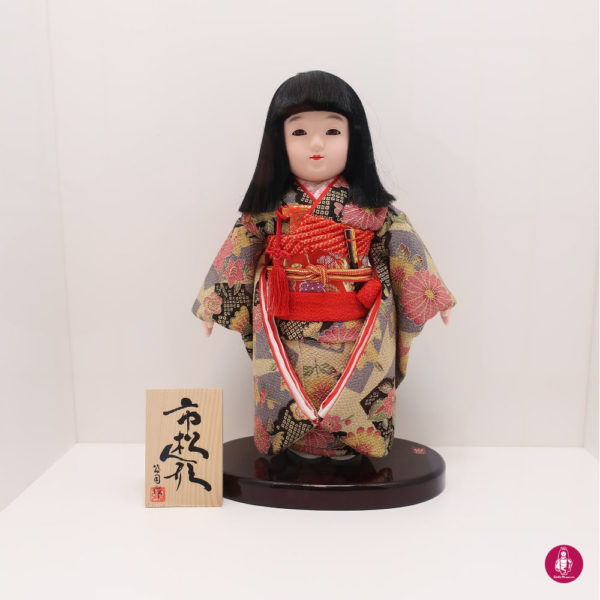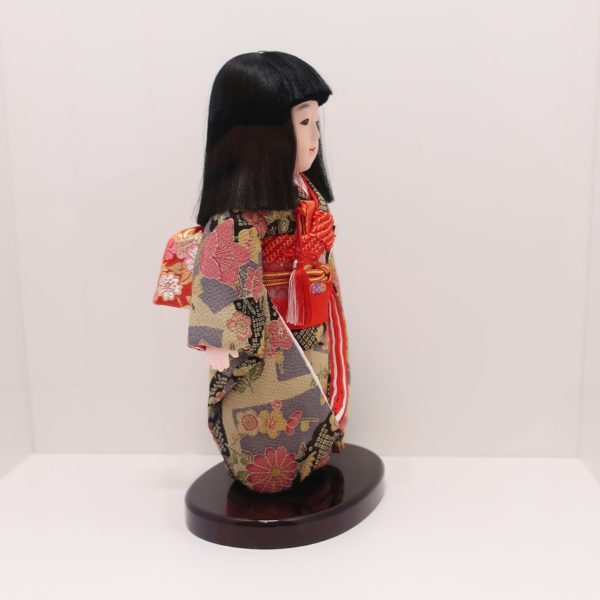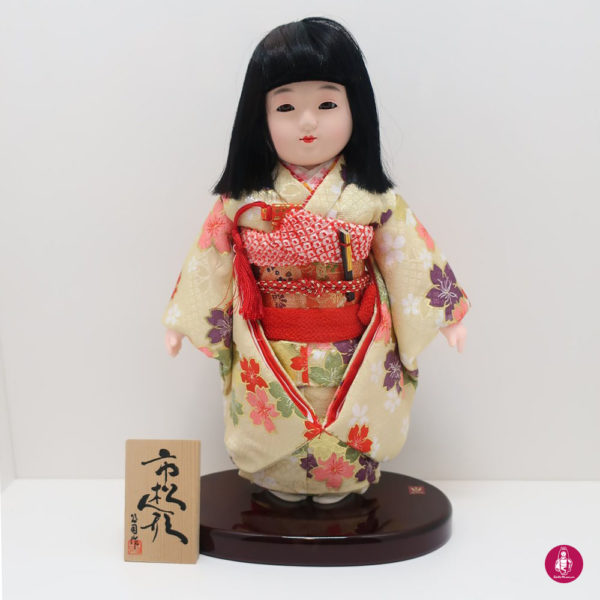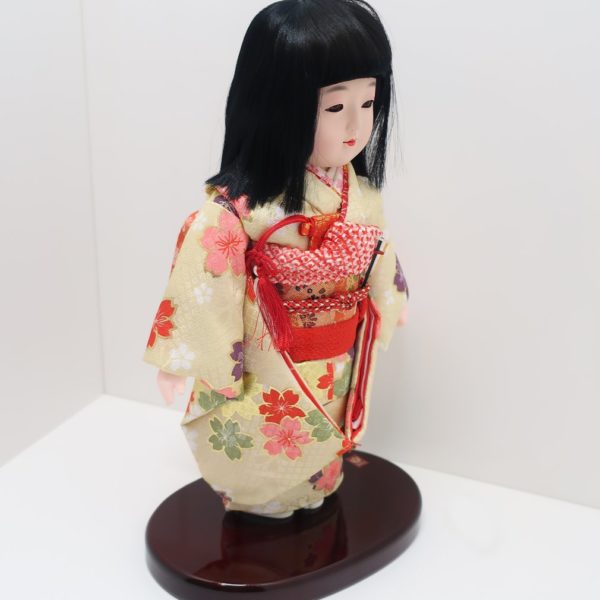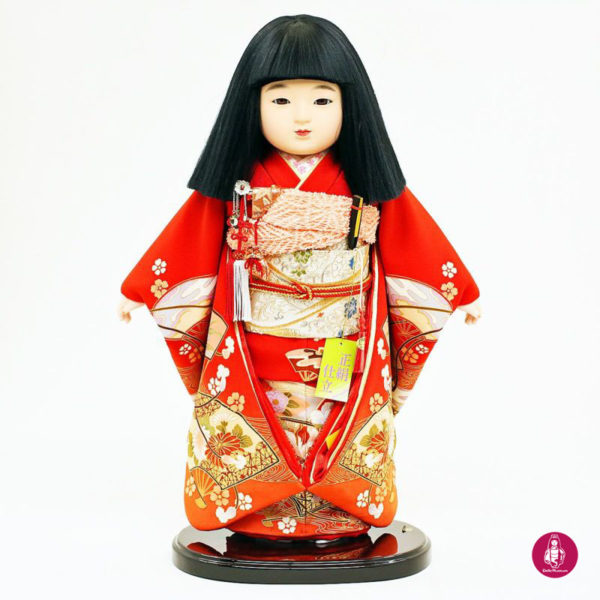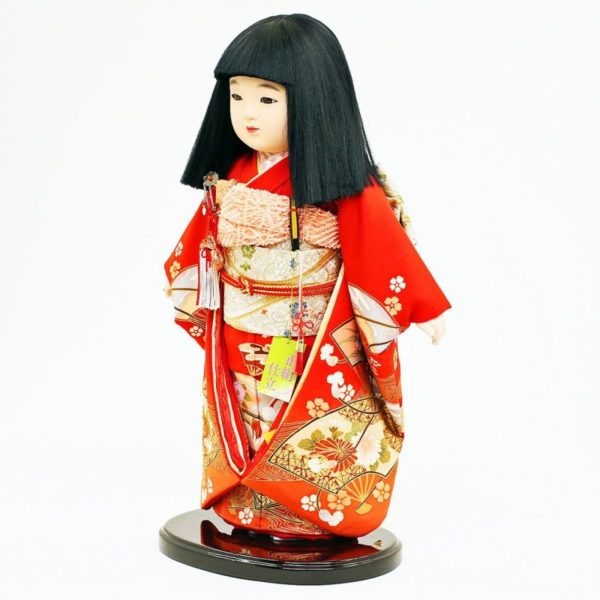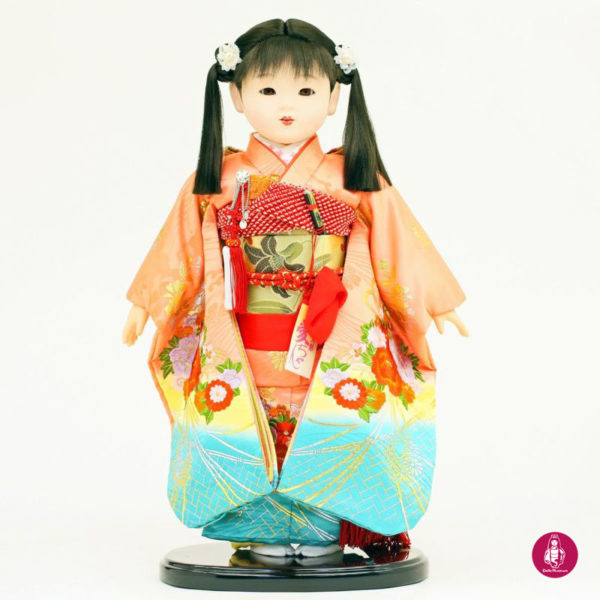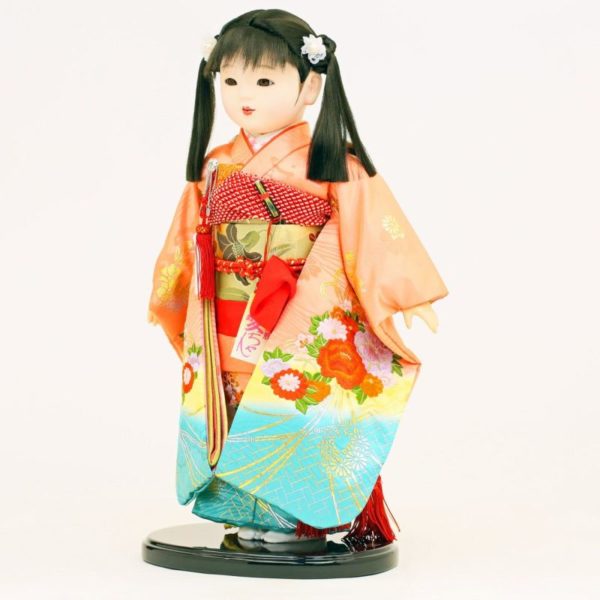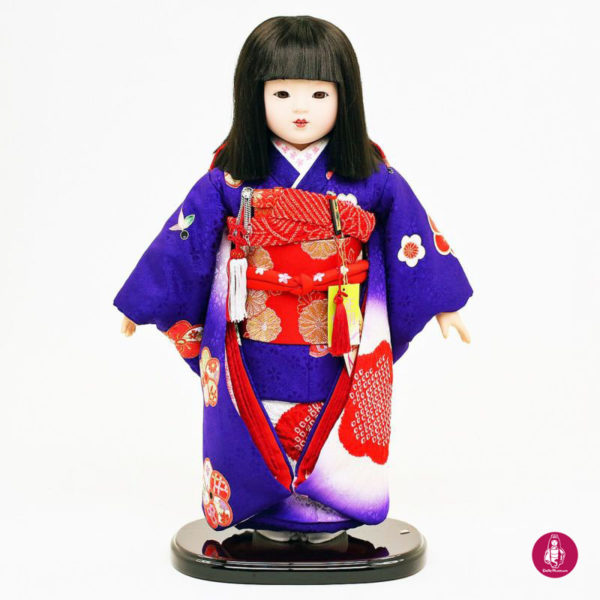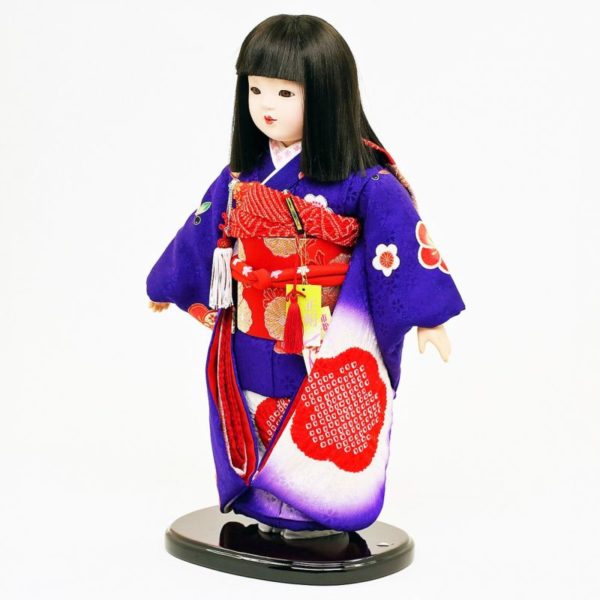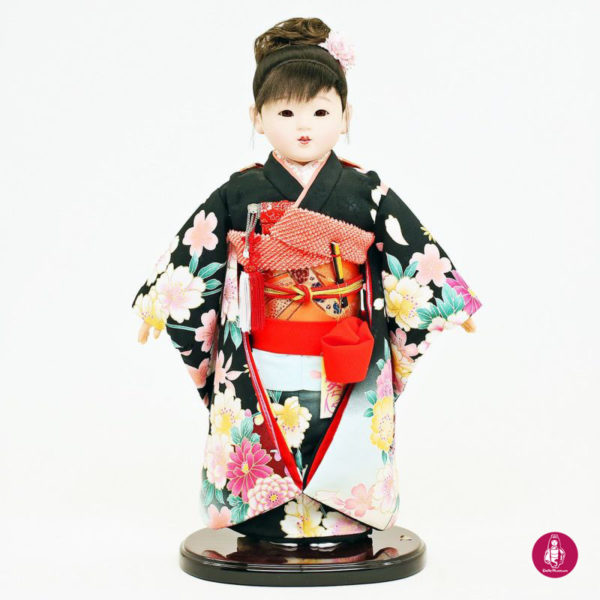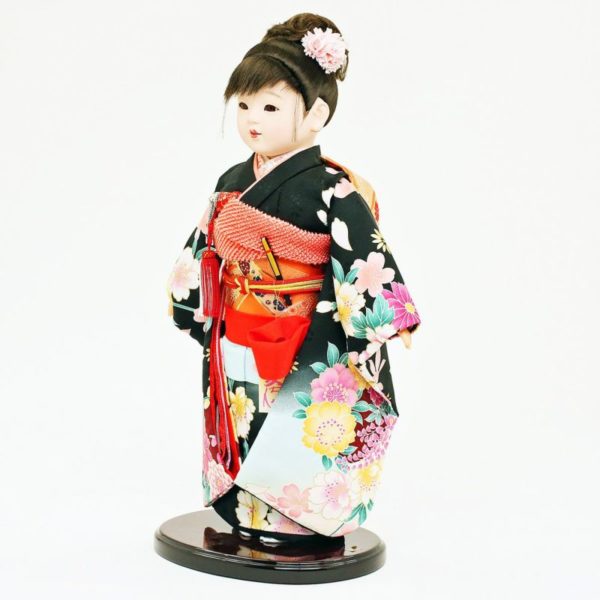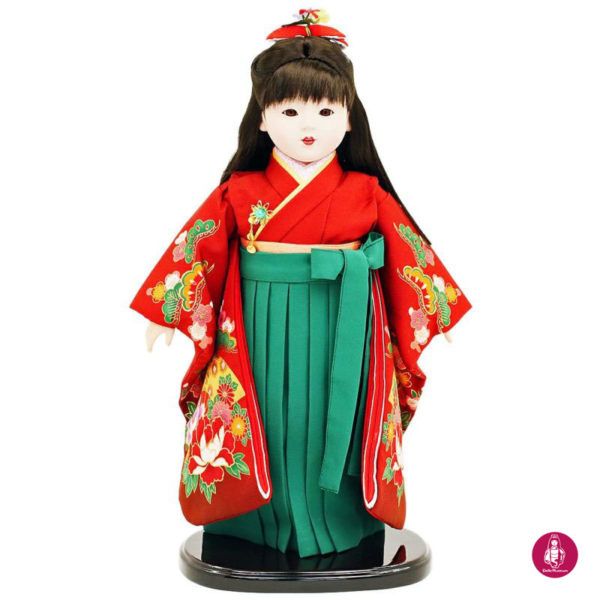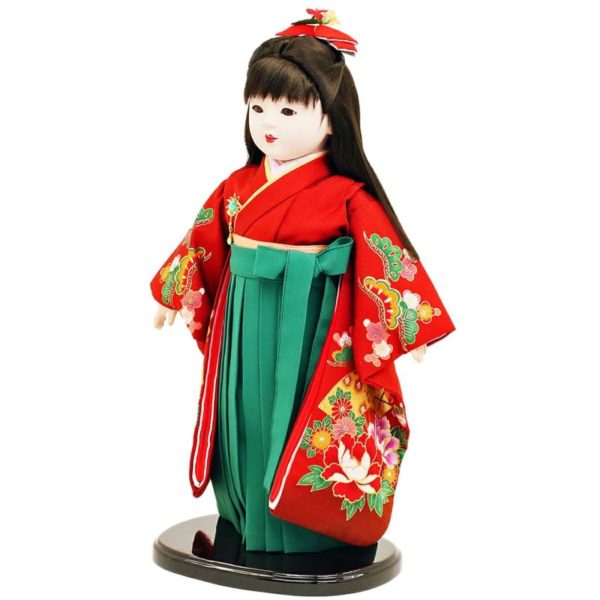Showing 1–20 of 37 results
-
$246.37
This doll wears a Kimono (traditional Japanese costume) which is designed with Sakura (cherry blossom) pattern. Obi (sash worn with a kimono) is also decorated with Sakura, Kikyou (Japanese bellflower) and Setsurin (snow crystals) patterns. According to a tradition, cherry blossom is the symbol of the rich harvest. Japanese bellflower is one of the seven flowers of autumn and its pattern is often used for Kimono of summer to feel cool and refreshing air. Snow crystals pattern represents the coming spring. This kimono has glossy black color therefore it looks elegant. (ICHIMATSU Doll – Standing – #6B58D) SIZE Vertical Horizontal Depth 33.0 cm 13.0 inches 23.0 cm 9.1 inches 14.0…
-
$227.42
This doll wears a Kimono(traditional Japanese costume) which is designed with Sakura(cherry blossom) and Momiji(maple) patterns. A tradition says that cherry blossom is the symbol of the rich harvest. Maple changes its color green to yellow, orange or red. It’s one of the charms of fall so that this plant pattern symbolizes this season. This kimono looks gorgeous thanks to its red color. It’s believed that red color will protect us from the evil spirits. The sun, blood or fire are also red so that it’s treated as a holy color. Red also represents vitality or energy. (ICHIMATSU Doll – Standing – #6A24A) SIZE Vertical Horizontal Depth 30.0 cm 11.8…
-
$195.84
This doll wears a Kimono (traditional Japanese costume) which is designed with Sakura (cherry blossom) pattern. Obi (sash worn with a kimono) is also decorated with same flower pattern. According to a tradition, cherry blossom is the symbol of rich harvest. This flower comes out in spring but its design for Kimono is enjoyed through the year. This Kimono is yellow color. For Japanese people, Yellow color of Kimono symbolizes spring because this color reminds us the sunshine. This color also represents youth, hope or change. (ICHIMATSU Doll – Standing – #5A4AB) SIZE Vertical Horizontal Depth 13.0 cm 5.1 inches 15.0 cm 5.9 inches 11.5 cm 4.5 inches This Ichimatsu…
-
$246.37
The doll wears a Kimono (traditional Japanese costume) which is designed with different colors of Botan (peony), Kiku (chrysanthemum), Momiji (maple) and Sho-Chiku-Bai patterns. Peony flower pattern represents happiness, wealth or perpetual youth and longevity. It has been expressed as one of the good meaning patterns, and believed as a sign of the rich harvest of the year. Chrysanthemum flower is one of the most popular designs among Japanese people. As its petals form radially, it’s linked to the Sun. This flower represents the eternal youth, the longevity or good health. Maple changes its leaves color from green to yellow, orange or red. It’s one of the charms of fall…
-
$88.44
The doll wears a Kimono traditional Japanese costume which is designed with maple leaf and camellia patterns. This Kimono is so cute and based around the beautiful pink color. The big flower that was drawn at the foot is camellia. The language of a camellia “Modest splendor” and “No airs and graces” , that means represent the japanese sense of beauty toward women. Camellia patterns are loved as one of the traditional patterns of Japanese patterns, which are known as patterns that can be selected by many Kimonos. Although the flowering season is fixed, but the leaves are always blue, so it is also called Kichijoki or Tokiwaki, and it…
-
$157.93
This doll wears a Kimono (traditional Japanese costume) which is designed with Sakura (cherry blossom), Ume (Japanese apricot), Kikyou (Japanese bellflower), Hagi (bush clover) and Setsurin (snow crystals) patterns. According to a tradition, cherry blossom is the symbol of rich harvest. This flower comes out in spring but its design for Kimono is enjoyed through the year. Japanese apricot pattern and snow crystals pattern, both of them symbolize the arrival of spring. Japanese apricot blossom pattern represents patience, vitality or prosperity of future generations. Japanese bellflower and bush clover, both of them are one of the seven flowers of autumn. This Kimono is black color and it makes the graceful…
-
$619.09
The doll wears a Kimono (traditional Japanese costume) which is designed with Ume (Japanese apricot) and Kiku (chrysanthemum) patterns. Small cherry blossom pattern and Sho-Chiku-Bai pattern cover the entire cloth. According to a tradition, cherry blossom is the symbol of rich harvest. The flowering of Japanese apricot blossoms announces the arrival of spring. People appriciate its adorable petal shape, scent and characteristic branches. This flower pattern represents patience, vitality or prosperity of future generations. Chrysanthemum pattern is one of the most popular designs among Japanese people. As its petals form radially, it’s linked to the Sun. It represents eternal youth, longevity or good health. Sho-Chiku-Bai pattern is the combination of…
-
$518.02
The doll wears a Kimono (traditional Japanese costume) which is designed with Botan (peony), Kiku (chrysanthemum) and several other flower and plants patterns. Peony flower pattern represents happiness, wealth or perpetual youth and longevity. It has been expressed as a kind of good meaning patterns, and believed as a sign of the rich harvest of the year. Chrysanthemum pattern is one of the most popular designs among Japanese people. As its petals form radially, it’s linked to the Sun. It represents eternal youth, longevity or good health. Obi (sash worn with a kimono) is dyed red and decorated with Sakura (cherry blossom) pattern. According to a tradition, cherry blossom is…
-
$277.96
The doll wears a Kimono (traditional Japanese costume) which is designed with different colors of Sakura (cherry blosom) pattern. According to a tradition, cherry blossom is the symbol of rich harvest. It’s said that it might be the reason why cherry-blossom viewing picnic was started in Japan. This Kimono is dyed cream color so that it makes elegant and mild looks. For Japanese people, yellow is the color of light (sunshine) so that this color symbolizes spring. Yellow-color Kimono has meanings such as lively, brilliant and warm. It also represents youth, hope or change. Obi (sash worn with a Kimono) is designed with cherry blossom pattern same as Kimono. And…
-
$429.57
This doll wears a Kimono (traditional Japanese costume) which is designed with Sakura (cherry blossom), Kiku (chrysanthemum), Ume (Japanese apricot) and Sasa (bamboo grass) patterns. Obi (sash worn with a kimono) is also decorated with cherry blossom pattern. A tradition says that cherry blossom is the symbol of the rich harvest. This flower comes out in spring but its design for Kimono is enjoyed through the year. Chrysanthemum is very popular motifs among Japanese people. As its petals form radially, it’s linked to the Sun. This flower represents the eternal youth, the longevity or good health. The flowering of Japanese apricot blossoms announces the arrival of spring. People appreciate its…
-
$530.65
This doll wears a Kimono (traditional Japanese costume) which is designed with flying crane pattern. Obi (sash worn with a kimono) is also decorated with the same bird pattern. It’s said that crane lives a long life so that its pattern represents longevity. Also, cranes make compatible couples therefore its pattern is the symbol of happy marriage. This Kimono is woven of geometric pattern which is called Sa-Aya-Gata. It’s originally came from China in Momoyama period (1568-1600), and it’s often used for formal wears of women. The color combination of red and gold makes magnificent looks. It’s believed that red color will protect us from the evil spirits. The sun,…
-
$530.65
This doll wears a Kimono (traditional Japanese costume) which is designed with Kiku (chrysanthemum), Botan (peony) and Sho-Chiku-Bai patterns. Obi (sash worn with a kimono) is also decorated with chrysanthemum pattern. This flower pattern is one of the most popular designs among Japanese people. As its petals form radially, it’s linked to the Sun. Chrysanthemum represents the eternal youth, the longevity or good health. Sho-Chiku-Bai pattern is the combination of pine tree, bamboo (bamboo leaf is used more often than bamboo itself especially for girl’s Kimono) and Ume (Japanese apricot), it’s an auspicious design. Peony flower pattern represents happiness, wealth or perpetual youth and longevity. It has been expressed as…
-
$246.37
This doll wears a Kimono (traditional Japanese costume) which is designed with Sakura (cherry blossom) and Noshi (long, thin strip of dried abalone) patterns. Obi (sash worn with a kimono) is also decorated with the same flower pattern. A tradition says that cherry blossom is the symbol of the rich harvest. Noshi is a strip of decorative folded paper attached to gift wrapping as an auspicious symbol. Each Noshi is designed with different types of flowers. This kimono looks charming thanks to its orange-red color. It’s believed that red color will protect us from the evil spirits. The sun, blood or fire are also red so that it’s treated as…
-
$246.37
This doll wears a Kimono (traditional Japanese costume) which is designed with Kiku (chrysanthemum), Kikyou (Japanese bellflower) and Ume (Japanese apricot) patterns. The flowering of Japanese apricot blossoms announces the arrival of spring. People appreciate its adorable petal shape, scent and characteristic branches. Japanese apricot blossom pattern represents patience, vitality or prosperity of future generations. Chrysanthemum is very popular designs among Japanese people. As its petals form radially, it’s linked to the Sun. This flower pattern represents the eternal youth, the longevity or good health. Japanese bellflower is one of the seven flowers of autumn so that its pattern is often used to Kimono for summer to feel cool atmosphere.…
-
$233.74
This doll wears a Kimono(traditional Japanese costume) which is designed with Sakura(cherry blossom) pattern. According to a tradition, cherry blossom is the symbol of rich harvest. This flower comes out in spring but its design for Kimono is enjoyed through the year. This Kimono is cream color. For Japanese people, Yellow color of Kimono symbolizes spring because this color reminds us the sunshine. This color also represents youth, hope or change. ICHIMATSU Doll – Standing – #6A32C SIZE Vertical Horizontal Depth 30.0 cm 11.8 inches 19.0 cm 7.5 inches 13.0 cm 5.1 inches This Ichimatsu doll is possibly out of stock. If you want to confirm the stock of this…
-
$795.98
The doll wears a Kimono (traditional Japanese costume) which is designed with variety flowers patterns such as Kiku (chrysanthemum) and Tsubaki (camellia) patterns. Obi (sash worn with a kimono) is dyed gold and designed with elaborate patterns. Chrysanthemum pattern is one of the most popular motifs among Japanese people. As its petals form radially, it’s linked to the Sun. It represents eternal youth, longevity or good health. Camellia tells the coming spring and it’s treated as a holy plant. Its pattern has been enjoyed for dyeing and weaving works since long time ago. Ougi (fan) pattern is also designed for this Kimono. Due to the idea that the shape of…
-
$663.31
The doll wears a Kimono (traditional Japanese costume) which is designed with Kiku (chrysanthemum) and Botan (peony) patterns. Obi (sash worn with a kimono) is dyed gold and designed with some flowers and plants patterns. Chrysanthemum pattern is one of the most popular designs among Japanese people. As its petals form radially, it’s linked to the Sun. It represents eternal youth, longevity or good health. Peony flower pattern represents happiness, wealth or perpetual youth and longevity. It has been expressed as one of the good meaning patterns, and believed as a sign of the rich harvest of the year. Sleeves and hem of this Kimono is decorated with Higaki pattern.…
-
$663.31
The doll wears a Kimono (traditional Japanese costume) which is designed with Ume (Japanese apricot) and Sakura (cherry blossom) patterns. Small cherry blossom patterns cover the entire cloth. According to a tradition, cherry blossom is the symbol of rich harvest. Japanese apricot pattern which is designed to this Kimono is called Hineri-Ume. Hineri means twist in Japanese. As this type of Japanese apricot blossom is twisted its petals, it’s named like this. The flowering of Japanese apricot blossoms announces the arrival of spring. People appriciate its adorable petal shape, scent and characteristic branches. This flower pattern represents patience, vitality or prosperity of future generations. If you focus on this doll’s…
-
$581.19
The doll wears a Kimono (traditional Japanese costume) which is designed with Botan (peony), Kiku (chrysanthemum), Sakura (cherry blossom) and Fuji(Japanese wisteria) patterns. Peony flower pattern represents happiness, wealth or perpetual youth and longevity. It has been expressed as a kind of good meaning patterns, and believed as a sign of the rich harvest of the year. Chrysanthemum pattern is one of the most popular designs among Japanese people. As its petals form radially, it’s linked to the Sun. It represents eternal youth, longevity or good health. According to a tradition, cherry blossom is the symbol of rich harvest. Purple color of wisteria has been treated as a noble color…
-
$518.02
The doll wears a Kimono (traditional Japanese costume) which is designed with Botan (peony), Kiku (chrysanthemum), Ume (Japanese apricot) and Matsu (pine tree) patterns. Peony flower pattern represents happiness, wealth or perpetual youth and longevity. It has been expressed as a kind of good meaning patterns, and believed as a sign of the rich harvest of the year. Chrysanthemum pattern is one of the most popular designs among Japanese people. As its petals form radially, it’s linked to the Sun. It represents eternal youth, longevity or good health. The flowering of Japanese apricot blossoms announces the arrival of spring. People appreciate its adorable petal shape, scent and characteristic branches. This…

